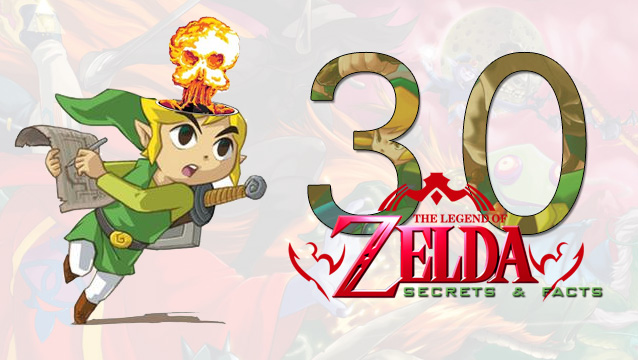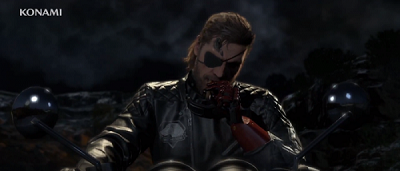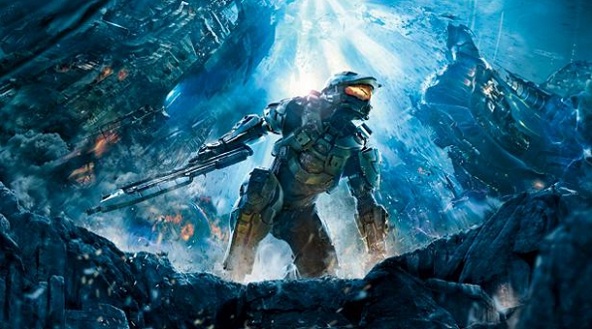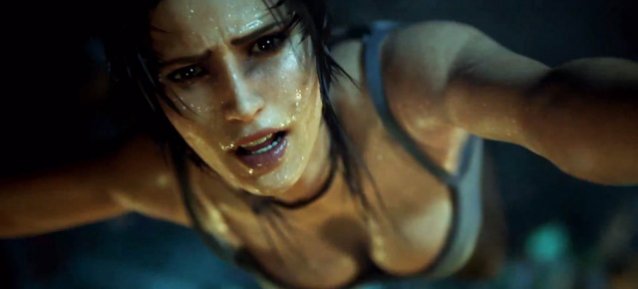

Resident Evil can’t die. But after the departure of creator Shinji Mikami, two entertaining but increasingly muddled follow-ups to the excellent Resident Evil 4, and countless dodgy spin-offs (Operation Raccoon City might be a genuine biohazard), the progenitor of the survival-horror genre isn’t quite the force it once was either. Capcom understands that many fans want to wind the clock back to when Resident Evil was about zombies and creepy mansions, and so has reanimated the 2002 GameCube remake (or 'REmake' as it's known) of the 1996 original once again as a budget-priced HD REmaster. That means upscaling it to 1080p, offering a widescreen mode, and grafting some fresh skin onto the long-dormant corpse, too. And even though the flesh is sloughing off this patchwork monstrosity in places, the infectious strain of gameplay it bears is one you still shouldn't miss.
It helps that the GameCube REmake was always an incredibly pretty game. With pre-rendered backgrounds and idiosyncratic static camera angles, Capcom Production Studio 4 managed to squeeze visuals from the little purple box (other colours were available) to rival that generation’s best. The bigger win, however, was the art direction, sandwiching opulent neoclassical oak-and-marble between unsettling dilapidated corridors and discomfortingly surgical lab spaces. Despite being layered with fresh textures - the fabric of a rug here, a pane of stained glass there - and gorgeous refreshed models for its S.T.A.R.S. and enemies, the REmaster doesn’t always live up to 2015’s high technical standards. Even so, the lick of paint and that artistic vision ensures the Spencer Mansion’s disquieting sense of place remains intact.
I’ll get the low-water mark out of the way first: the Aqua Ring, where Neptune’s wrath awaits, is a pixellated hodgepodge, visible background artifacting on PS4 contrasting sharply with the crisper, more detailed Chris Redfield or Jill Valentine, whether in traditional garb or their BSAA alternate costumes. At the other end of the scale, the entrance hall is sublime, the marbling in the tiles of the reflective floor sharp, the candle flames more subtle, the candelabras themselves better defined. Hell, the carpets even look plush. Most of the mansion, and later the residence, falls closer to this extreme, with foreground detail rarely left unvarnished, some areas recreated entirely, and just the odd ugly texture or detail lurking in the murk. In many places, the game is beautiful - or at least as beautiful as a mouldering old stately home can be. Just be warned that when you head underground, you’ll stumble across a few horrifying scenes that have nothing to do with the T-virus.
If the visual quality is patchy, the rest of the game is anything but. There is a very good reason the Resident Evil remake is remembered as a classic, and nothing about that has changed. It’s hard to imagine a modern game that would dare to force you to plant your feet to fire at incoming threats, that so deliberately disempowers you with its claustrophobic crops on the action and cumbersome controls, but Resident Evil does. And it does it for one purpose: atmosphere.
I guess an economy of effort was required to make the REmaster a viable cut-price release, which explains some of its uglier moments. What is inexplicable is the framerate. Consoles are denied the 60fps option of the PC version, but that PS4 sometimes dips into the low 20s smacks only of poor optimisation. It’s inexcusable, but also, weirdly, less relevant than I’d feared. In fact, thanks to the herky-jerky camera shifts and patient nature of combat, it’s barely even noticeable unless you’re looking for it. If the notion bothers you anyway, it’s the PC version you want.
You do not spam out bullets in the Arklay mountains, you conserve ammo, loosing shots only when you know they’ll count so that you might eke out a little more life. You do not dash about solving puzzles, but plan your route and limited inventory space (six slots for Chris, eight for Jill) to gradually unpick the sadist’s puzzle box that is the Spencer estate. It’s a slow burn, but steadily the stakes mount and by the midpoint you’re jumping at clattering window panes, wary of the corpses on the floor that you’ve learned might not stay dead, and touching cloth every time the game breaks its restraint and deploys one of its orchestrated scares. It's not terrifying in the way Alien: Isolation is - despite the similarities between limited typewriter saves and Alien's emergency phone booths - but if you're itchy (tasty!) for a survival-horror game that emphasises jump scares and the tense scrabble to stay alive, this will scratch that itch very nicely.
The REmaster even brilliantly amplifies the vibe with the upgrade to 5.1 surround sound. There’s no noise quite as fascinatingly horrible as the squelch of a partially decomposed foot taking a step just a few inches away off screen. Fires crackle with a warmth you can hear, and the gentle safe room music has never been a more soothing balm for tender nerves. In many ways, the audio does what visual polish never could, immersing you more fully in the rich atmosphere.
I’m less sure about the REmaster’s final addition: the new control scheme. Yes, Resident Evil’s tank controls are notoriously awkward, but that’s sort of the point. Mikami and co didn’t want you to feel confident, but powerless. I’m painfully aware, however, that I’ve trained my brain to handle them. Since you can’t control the camera anyway, after a short adjustment period it makes sense to me that pushing forward on the stick moves your character forward relative to their own eye line, saving you reassessing your thumb’s angle with every perspective flip. The new controls mean doing exactly that, but with one caveat: you’ll keep moving in the direction of your last tilt so long as you keep holding the stick. It’s just a different kind of awkward to my mind, but if it helps you sink yourself into Resident Evil, then that's great.
And that’s really the story of this whole REmaster. It’s an often brilliant but uneven wrapper for a game that’s still, after nearly two decades, one of - if not the - best B-movies in videogame form ever made. Any visual low points are worth enduring because the game itself remains a cold-as-a-morgue-slab classic, and this version offers the best-sounding, most versatile way to play it yet.




 Gears of War Judgement Part 3 (Sophia’s Testimony Sections 1-3)
Gears of War Judgement Part 3 (Sophia’s Testimony Sections 1-3) Metal Gear Rising: Revengeance Review
Metal Gear Rising: Revengeance Review The Sims 4: New Update brings items for Valentines Day
The Sims 4: New Update brings items for Valentines Day Tomb Raider Walkthrough | 2013
Tomb Raider Walkthrough | 2013 Odd Partners: Videogames and Environmentalism
Odd Partners: Videogames and Environmentalism